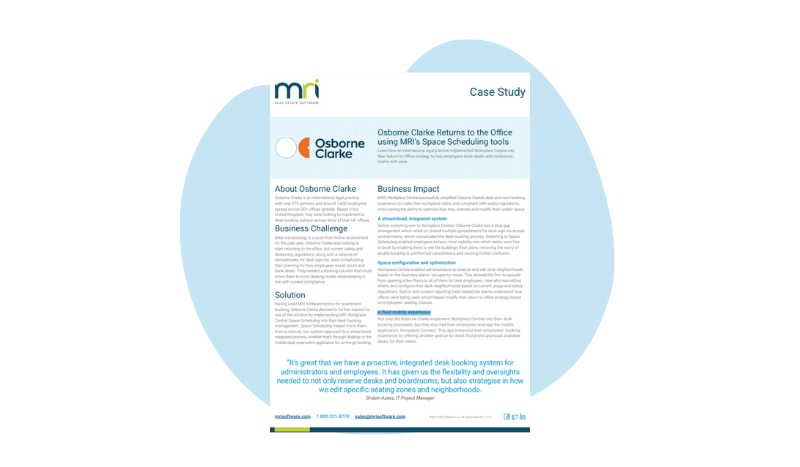What is retail space management?
Retail space management is the art and science of using physical space effectively to maximize efficiency, enhance customer satisfaction, and drive profitability. It’s what helps retailers organize their stores in a way that attracts shoppers, boosts sales, and makes the best use of every square foot. For landlords and property managers, knowing what is retail space management is essential to providing spaces that tenants can optimize for their success.
Think about it: have you ever been to a store where you couldn’t find what you were looking for? Or felt cramped and overwhelmed by clutter? Effective space management prevents this by ensuring the layout is logical, products are easy to find, and the overall shopping experience is enjoyable.
Why is retail space management important for retailers and landlords?
Retail space management is essential because it directly impacts how customers interact with your property and how tenants perform. For landlords, well-managed spaces attract high-quality tenants and improve retention rates. Tenants, in turn, benefit from layouts that encourage customer engagement and increase sales.
Here are some quick facts to consider:
- Strategic space management can boost store sales by up to 10%, according to Deloitte.
- A survey by the National Retail Federation found that 64% of shoppers won’t return to a store with poor layout or product placement.
- Customers are more likely to buy when they can navigate the space easily and comfortably.
- Retail space management benefits everyone. Customers have a better experience, retailers sell more, and landlords retain happy tenants.
How does efficient retail space management impact profitability?
Every square foot of retail space costs money, and using it wisely can significantly increase profitability. Well-organized stores encourage customers to stay longer, discover more products, and make additional purchases. For example, placing high-margin items in high-traffic zones, also known as “hotspots,” can drive impulse buys.
Here’s why it matters:
- Shoppers in well-organized stores are less reliant on staff, cutting operational costs.
- Poor use of space, like allocating prime spots to low-yield items, can lead to lost revenue.
- Retailers using space strategically often see higher average transaction values.
- By optimizing space, you not only enhance sales but also improve operational efficiency—benefiting both tenants and landlords.
What are the key components of retail space management?
Retail space management involves several key components that ensure tenants can operate efficiently and customers have a great shopping experience. These components include layout design, product placement, and strategic use of shelf space. By addressing these questions and understanding what is retail space management, you can ensure that every inch of your property works toward increasing profitability.
Here are some questions every retail manager should ask:
- How much space should I allocate to each product category?
- Where should high-demand or impulse products be placed for maximum visibility?
- How can I ensure foot traffic flows smoothly without congestion?
How do leasing, maintenance, and tenant relationships fit into retail space management?
Leasing, maintenance, and tenant relationships are the backbone of successful retail space management. Flexible leasing terms, for instance, allow tenants to adjust layouts to suit their needs. This is especially useful for stores undergoing seasonal changes or introducing new product lines.
Strong tenant relationships also matter. Regular communication helps landlords understand tenant challenges, while well-maintained spaces improve the shopping experience. A clean, safe, and attractive property ensures tenants stay longer and shoppers come back.
Pro tip: Encourage collaboration between tenants by hosting joint promotional events or sharing insights on customer behavior. This fosters community and boosts foot traffic for everyone.
How can technology improve retail space management?
In today’s digital age, technology plays a huge role in improving retail space management. From tracking customer behavior to optimizing layouts, modern tools provide actionable insights that make management more efficient.
MRI Software leads the way with tools like retail lease management software, which simplifies rent collection and lease tracking. These technologies automate manual tasks, reduce errors, and give you the data you need to make informed decisions.
Benefits of technology in retail space management:
- Foot traffic analysis: Understand where shoppers spend the most time.
- Sales tracking: Match product placement with performance data.
- Automation: Save time on routine processes like rent collection or reporting.
How does MRI Software help streamline retail space management?
MRI Software helps landlords and property managers optimize retail spaces by providing tools that enhance operational efficiency. For example, you can use our analytics to track tenant performance and identify opportunities for improvement. Our retail property management solutions streamline everything from lease negotiations to rent processing.
What are the challenges in managing retail space?
Managing retail space comes with its own set of challenges. One of the biggest hurdles is balancing the needs of multiple tenants while ensuring the space meets customer expectations. Overcrowding, inefficient layouts, and poor product placement can lead to unsatisfied shoppers and lost revenue.
Another challenge is adapting to changing consumer behaviors. For instance, a surge in online shopping has prompted retailers to reimagine their spaces, focusing more on experiences than inventory.
How do retailers manage changing consumer demands with space optimization?
Retailers optimize their spaces by regularly updating layouts and product placements to reflect consumer trends. For example, rotating seasonal products into high-traffic areas can drive sales during peak times. Creating clear pathways and logical groupings also makes it easier for shoppers to find what they need.
Consider this: Customers shopping for baking ingredients will expect similar products grouped together. Disorganization can frustrate them and send them elsewhere. By focusing on convenience, retailers can keep customers happy and encourage repeat visits.
What are the best practices for managing retail space?
Here are some tried-and-true practices for effective retail space management:
- Use Data to Drive Decisions: Analyze sales and foot traffic to identify high-performing areas.
- Focus on Hotspots: Place high-margin or promotional items in high-visibility zones.
- Choose the Right Layout: Consider a grid for efficiency or a loop for customer flow.
Optimize Shelf Space: Ensure high-demand products are easily accessible.
Get the space management software guide
Enter space management software – for monitoring, assessing, and adjusting workplace spaces.

Osborne Clarke Returns to the Office using MRI’s Space Scheduling tools
Learn how an international legal practice implemented Workplace Central into their Return-to-Office strategy to help employees book desks and conference rooms with ease. About Osborne Clarke Osborne Clarke is an international legal practice with over…
